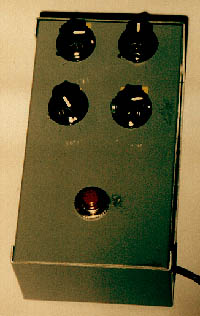NOTE: The following blog post, and the ones that proceed it, are articles I wrote for my school newspaper The Beacon under my music column Exploding Head.
So for the past month and a half, I've been trying to scratch dubstep's surface, trying to find as many artists and labels to play on the radio so that I could one day, in the near future, start a dubstep/grime show on Radiate FM. Dubstep, a genre assembled in the heart of London, mixes aspects of Jungle, Drum & Bass, Reggae/Dub and House music. Add a little bit of bass to establish the foundational rhythm and you've got dubstep.
I've been rummaging through dubstep blogs and labels' archives, trying to dig my way into this odd, intriguing London culture. Through my research, I came across Zomby's Where Were You in 92' and while listening to the record, I was reintroduced to the repetitive airhorn sound effect. Most of Zomby's songs contain the airhorn but Where Were You in '92, in particular, goes excess on the airhorn. On purpose, though, because the album acts as a retrospective Jungle throwback record.
But you know what I'm talking about, though. It's the same damn sound effect played in almost every dubstep, dancehall and reggaeton song. It's the same sound effect you've been wondering about since you first heard it on that Nina Sky or Sean Paul song. I've always wondered why this sound effect, of all sound effects is used so heavily in these songs. Why these songs? Why not indie-rock songs or electro?
here's the sample:
Is it a big, raucous behemoth of a sound that acts as some form of a global beacon for music that isn't from America? Most of the songs that supply the horn are by artists from South America, the Carribean or across the pond starting in Africa and and ending somewhere in Brighton. Is it simply just a cool sound used because it adds complexity to the song? I've heard a lot of dubstep songs use the horn sample excessively, possibly to safeguard the track from mediocrity. Well, I'm shoeing in on my former hypothesis.
I also found it singular and weird that I'd spend an entire article writing about a horn. I also found it weird that I'd spend more than one article traveling around the internet and making a couple of phone calls finding an answer to my question. So this article will definitely be continued into a series of articles branching different explanations for the sound, and possibly analyzing the genres in which the sound is employed.
I've been losing my mind, Pixies-style, trying to understand it and I feel as if I'd be providing good service to the concerned reader/music aficionado if I was to tell them what the horn was used for, and not just settle for the horn being used by producers for funsies sake. If you're as obsessive as I am about these little quirks, then hopefully you'd appreciate my trek to make sense out of this damn horn.
Just from simplistic web research and DJ forum-browsing, there are different handles for this dancehall SOS. Some DJs refer to it as the Dub Siren, though, this name is a little deceiving. The Dub Siren is actually an synth/effects pedal used for clubs and parties to modify different preset sounds. It's used mainly for effect and DJs adjust it through a pitch nob. Most of the sounds you'll hear are familiar since they have the same cultural resonance as the airhorn sample.
You can purchase one on eBay for cheap, as far as equipment goes. The seller, circuit-bender, included the product was good for raves, but apparently nobody told them that the "rave" died in the mid-90s. Though, with ever-evolving technology and the portability of autotune, a DJ can just download a Dub Siren on the iPhone app store and form a rave wherever they go. Basically, the physical Dub Siren effect/synth pedal is obsolete these days and can only serve the purpose of being an obscure novelty.
But the airhorn is definitely not called a Dub Siren. So I will consider that statement DEBUNKED!
Stay tuned for the next airhorn volume.


No comments:
Post a Comment